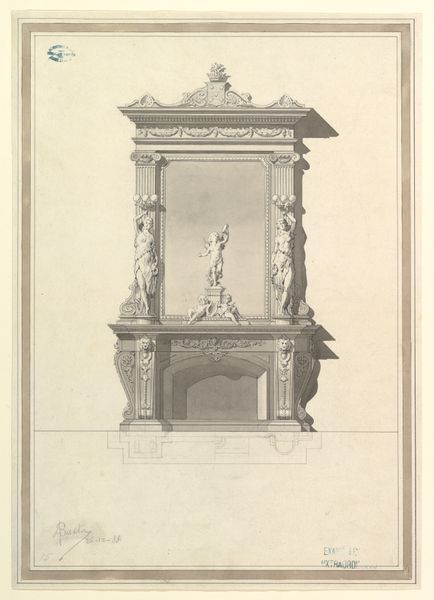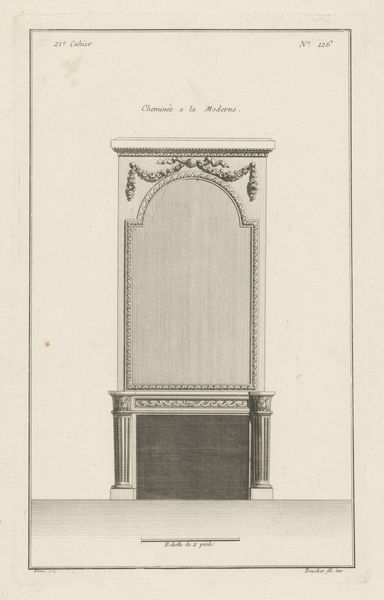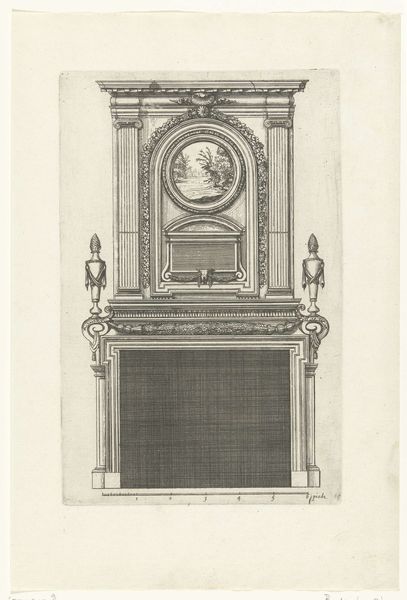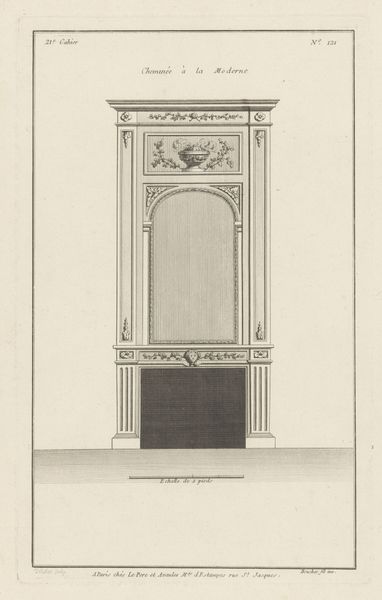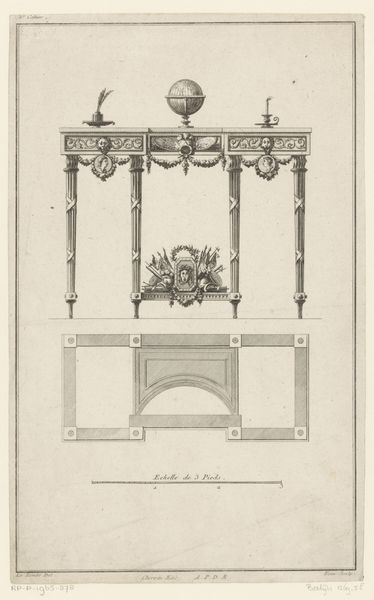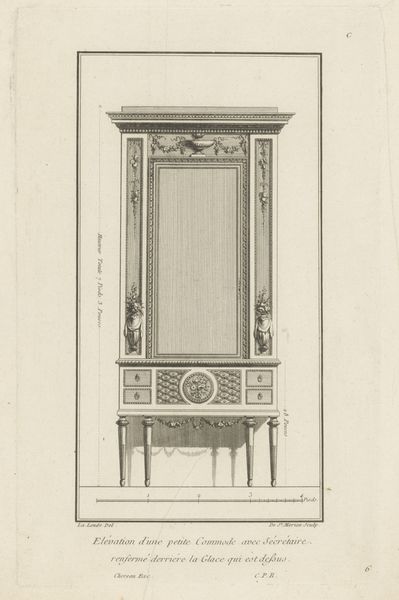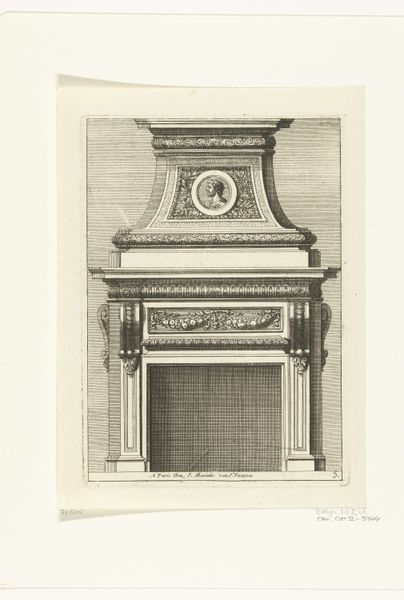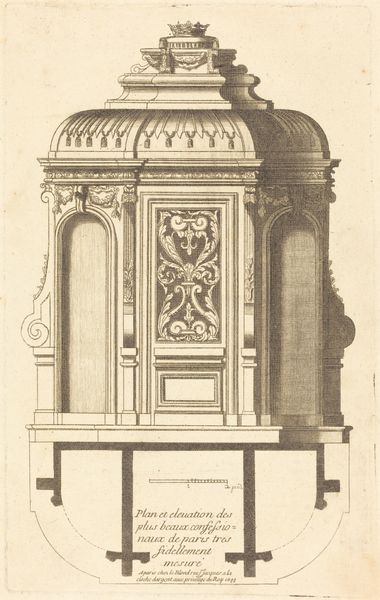
Dimensions: sheet: 15 3/16 x 9 1/4 in. (38.5 x 23.5 cm)
Copyright: Public Domain
Curator: Here we have Isaac Ware's "Salon Chimney, Houghton Hall, Norfolk, Elevation," dating back to 1735, currently residing at The Metropolitan Museum of Art. It's rendered through engraving, showcasing architectural design. Editor: It strikes me as remarkably sterile, almost surgically precise in its lines. There's a cold grandeur at play. What are your first impressions from a compositional standpoint? Curator: Indeed, the linearity dominates. We see this adherence to line exemplified in the pilasters, entablature, and pediment, each element precisely delineated to establish a clear visual order. It embraces neoclassical principles, evidenced by the symmetrical design, classical motifs like the Corinthian capitals. Editor: It is so illustrative of the wealth and power concentrated in those estates during that period, not merely a functional element of interior design but a stage for performing social rituals and cementing class distinctions. Does Ware have known patrons of significance? Curator: Absolutely. Ware rose to prominence in the milieu of aristocratic patronage, with Houghton Hall commissioned by Robert Walpole. He became a significant figure in British Palladianism and, because he was lower-born, helped usher architecture to the wider English public as well. Editor: Knowing that context changes everything! The severe, regimented structure wasn't just about aesthetic preference, but about broadcasting a specific image. Did engravings of designs like this actually play a role in democratizing aesthetics at all? Curator: Engravings certainly broadened access to architectural knowledge, and disseminated architectural styles. By producing prints after his work and the designs of others, Ware helped create and cultivate a market of ideas for designers in the 18th century. But even in circulation, this design still projects exclusivity, of course. The sheer scale it implies, the materials – it whispers of vast fortunes. Editor: It's fascinating to consider how an object can simultaneously participate in democratizing trends while still upholding existing power structures. It's all about whose story gets told, and by whom. Thanks for unpacking this piece with me, fascinating! Curator: It's been my pleasure. Every angle we consider exposes how art, even architectural drawings, carry socio-political meaning.
Comments
No comments
Be the first to comment and join the conversation on the ultimate creative platform.
